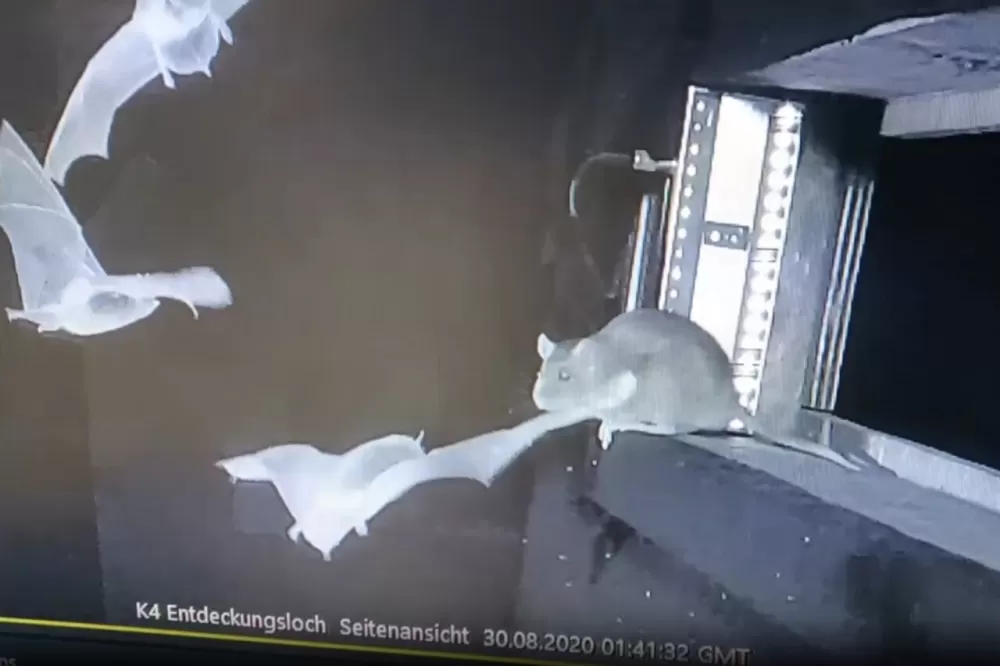The Delicious Fright: Why We Keep Coming Back for More Spooks
Share- Nishadil
- October 29, 2025
- 0 Comments
- 3 minutes read
- 23 Views

CU Boulder Dives Deep Into Our Brain's Love Affair with Fear
Ever wonder why a good scare feels so... good? Researchers at CU Boulder are peeling back the layers of our brains to understand precisely what draws us to the unsettling thrills of horror films and haunted houses.
There’s a certain thrill, isn't there? That delicious shiver down your spine, the sudden gasp caught in your throat, maybe even a scream escaping unbidden. We pay good money for it, for the privilege of being absolutely terrified — whether it’s in a darkened cinema, clutching a friend’s arm during a horror flick, or stumbling through a maze of jump scares in a haunted house. It’s a curious human paradox, this active pursuit of fear. But why, exactly, do we do it? What makes a good scare so… undeniably good?
Well, honestly, it’s a question that’s intrigued thinkers for ages, but now, a fascinating new study emerging from the very clever minds at CU Boulder is trying to unpick the intricate biological and psychological threads behind our love affair with the spooky and the unsettling. They’re diving deep, you could say, into the very mechanics of our brain’s threat response, aiming to understand just what lights up – or perhaps shuts down – when we willingly expose ourselves to perceived danger.
Think about it for a moment: our ancient ancestors, bless their hearts, faced genuine threats constantly. A rustle in the bushes meant a predator; a strange shadow, perhaps an enemy. Fear, in those times, was a vital survival mechanism, a biological alarm bell designed to jolt us into fight, flight, or freeze. And that fundamental wiring? It’s still very much intact within our modern skulls. Yet, here we are, intentionally triggering that very alarm system with zombies, ghosts, and serial killers on screen or actors lurking around a dark corner.
The researchers at CU Boulder, it seems, are zeroing in on this fascinating distinction: simulated threat versus real threat. When you’re safely ensconced on your sofa, popcorn in hand, watching a terrifying scene unfold, your brain registers the fear — the increased heart rate, the adrenaline surge, the heightened senses — but there's a crucial, unspoken understanding. It’s not real. The monster isn't actually coming for you. This controlled environment, this mental safety net, is key.
And so, we get to experience all the thrilling physiological responses of danger without the actual, you know, danger. It’s like a workout for our primal fear system, a chance to flex those ancient muscles in a consequence-free zone. Some might even argue it's cathartic, a way to process anxieties or simply to feel intensely alive. For once, the stakes are delightfully low, even as our bodies respond as if they’re sky-high. The adrenaline pumps, our focus sharpens, and then… it's over. And we’re left with a sense of exhilaration, maybe even a little smugness that we 'survived' the ordeal.
Ultimately, this CU Boulder study isn't just about why we love jump scares; it's about understanding the complex interplay between our biology, our psychology, and the cultural rituals we’ve built around fear. It hints at something profoundly human about our need to confront, to master, and perhaps even to play with the darker corners of our own primal responses. And for anyone who’s ever screamed and then laughed in the same breath during a horror movie, that's a truth that feels deeply, wonderfully resonant.
Disclaimer: This article was generated in part using artificial intelligence and may contain errors or omissions. The content is provided for informational purposes only and does not constitute professional advice. We makes no representations or warranties regarding its accuracy, completeness, or reliability. Readers are advised to verify the information independently before relying on







